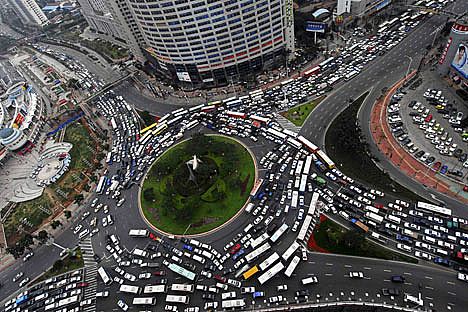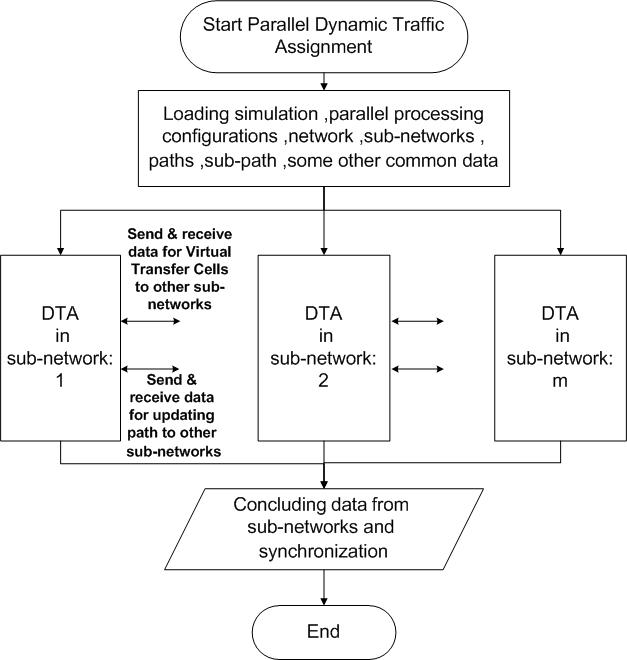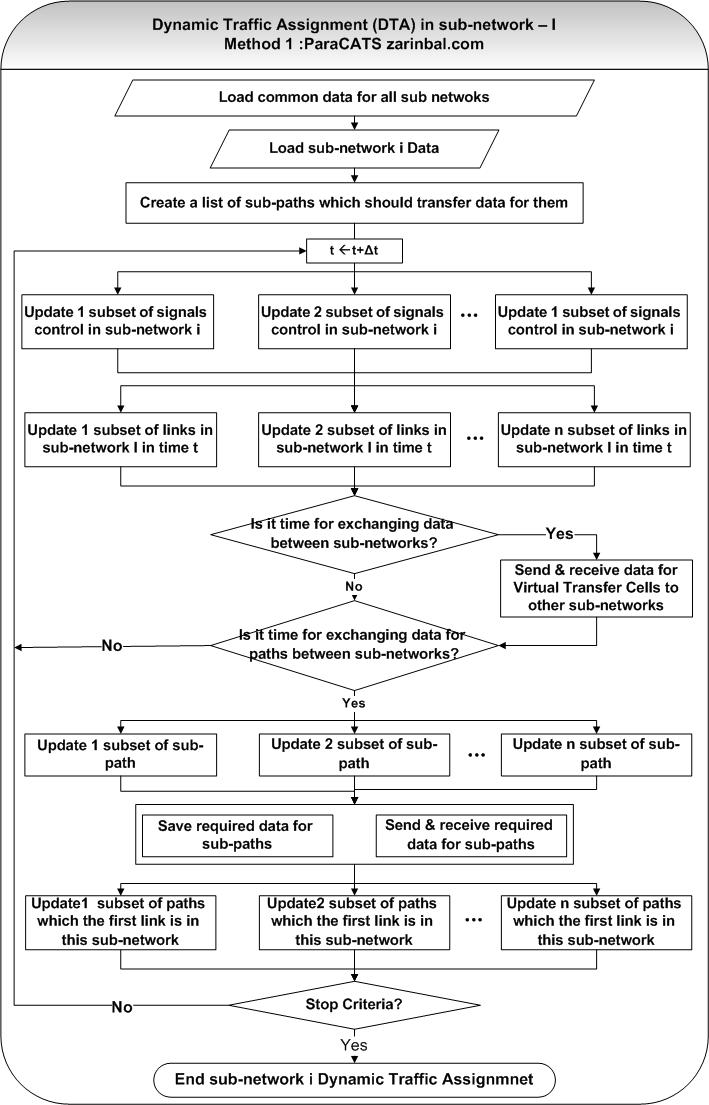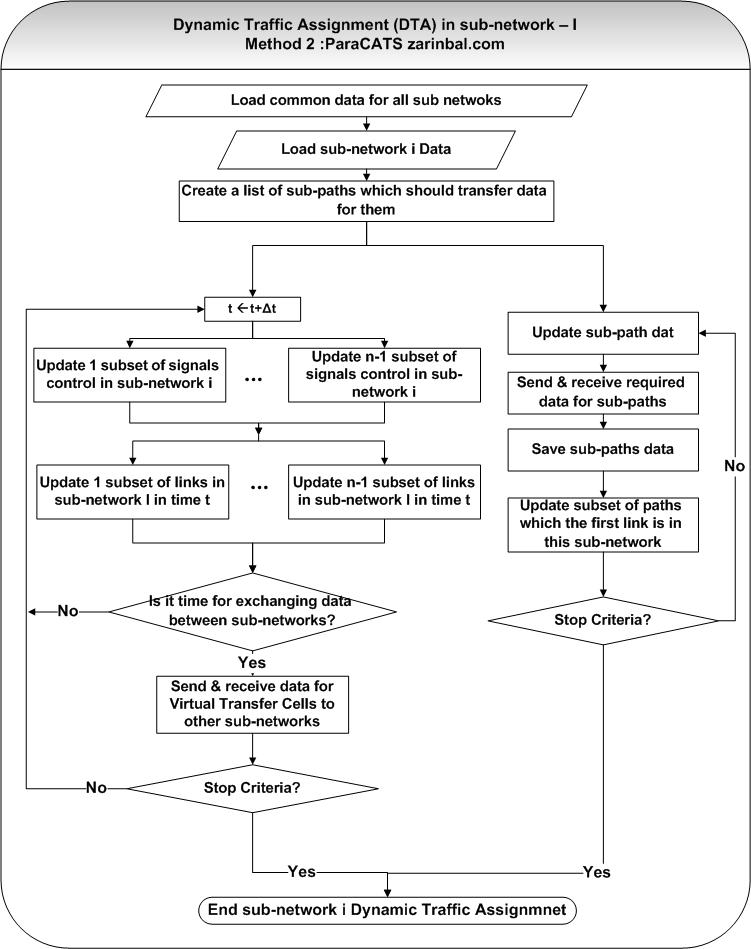In this research, my master dissertation, a Simulation-based Dynamic Traffic Assignment model based on parallel Processing is proposed. Dynamic Traffic Assignment has two key sub problems: Route choice modeling and Dynamic network loading. In route choice problem, a Type-2 fuzzy system is proposed to model the complexities and ambiguities, which exist in the behavior of network users. The model can consider behaviors of network users in the forms of route choosing and route changing. In dynamic network loading problem, a Cellular Automata model is proposed as a microscopic simulator. Finally, In order to speed up the model and to use it in real time problems, the proposed Dynamic Traffic Assignment algorithm is implemented by using parallel processing systems.
This research is combination of my last two researches for this project: Type-2 fuzzy system as the Route choice model and CATSIMS as the Dynamic network loading model. (For more information on the detail of each of please read the related articles)
The final outcome of this project is ParaCATS, novel parallel software, which can perform a simulation-based dynamic traffic assignment in large area of a city in micro-scale. I am going to test this software on Isfahan, the second largest city of Iran by the Information which is provided by Rahshahr Company.
 This model is a Dynamic en-route assignment model for using in real-time traffic management systems with the power of Parallel Processing. A hybrid model of shared memory and distributed memory is implemented with OpenMP and MPICH. The network is divided into m sub-networks. Sub Networks are processed in different processing nod as distributed system. Each sub-network in each processing nod is simulated as shared memory system to reduce data transfer. Each sub-network communicates with other sub networks to exchange car and path data. In order to reduce data transfer an innovative idea which I call it “Virtual Transition Cells” is provided to for exchanging cars. Paths are generated at the beginning of the simulation with a recursive algorithm. Then, they are divided into sub networks as sub-paths. Each sub-network only has information about its own sub paths and the connection between its sub paths with other sub path in other sub networks. At the certain times of data transferring, only the required sub path data is transferred. This method reduces the amount memory usage in each processing nod and data transfer between them. Moreover, In order to reduce memory usage of the program in any processing nod, advanced memory management is implemented.
This model is a Dynamic en-route assignment model for using in real-time traffic management systems with the power of Parallel Processing. A hybrid model of shared memory and distributed memory is implemented with OpenMP and MPICH. The network is divided into m sub-networks. Sub Networks are processed in different processing nod as distributed system. Each sub-network in each processing nod is simulated as shared memory system to reduce data transfer. Each sub-network communicates with other sub networks to exchange car and path data. In order to reduce data transfer an innovative idea which I call it “Virtual Transition Cells” is provided to for exchanging cars. Paths are generated at the beginning of the simulation with a recursive algorithm. Then, they are divided into sub networks as sub-paths. Each sub-network only has information about its own sub paths and the connection between its sub paths with other sub path in other sub networks. At the certain times of data transferring, only the required sub path data is transferred. This method reduces the amount memory usage in each processing nod and data transfer between them. Moreover, In order to reduce memory usage of the program in any processing nod, advanced memory management is implemented.

2 algorithms is implemented for Dynamic Traffic Assignment in each sub network.
- Updating route information in certain time intervals
- Updating route information parallel to network loading
You can see the flow charts of these algorithms in the following diagrams

